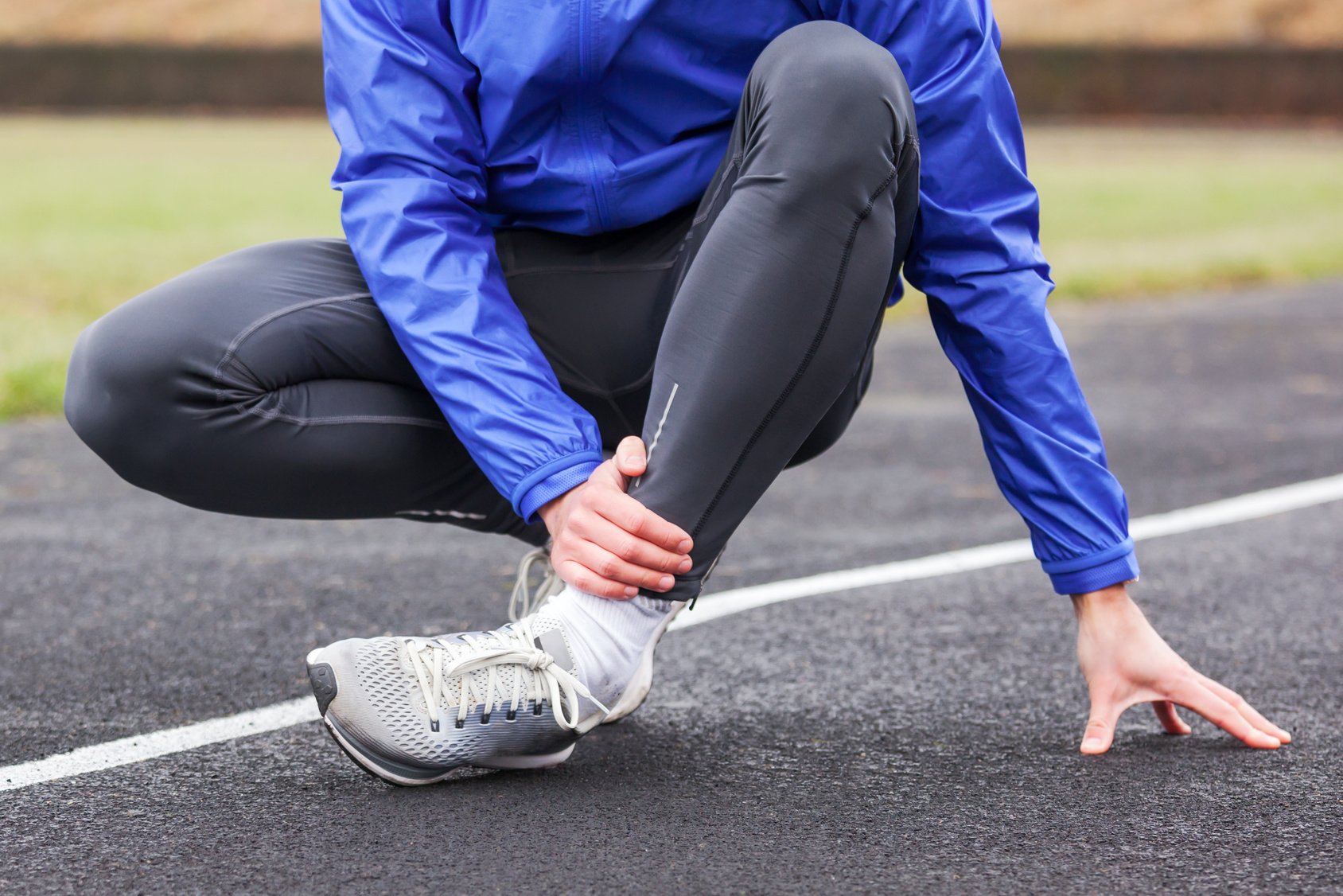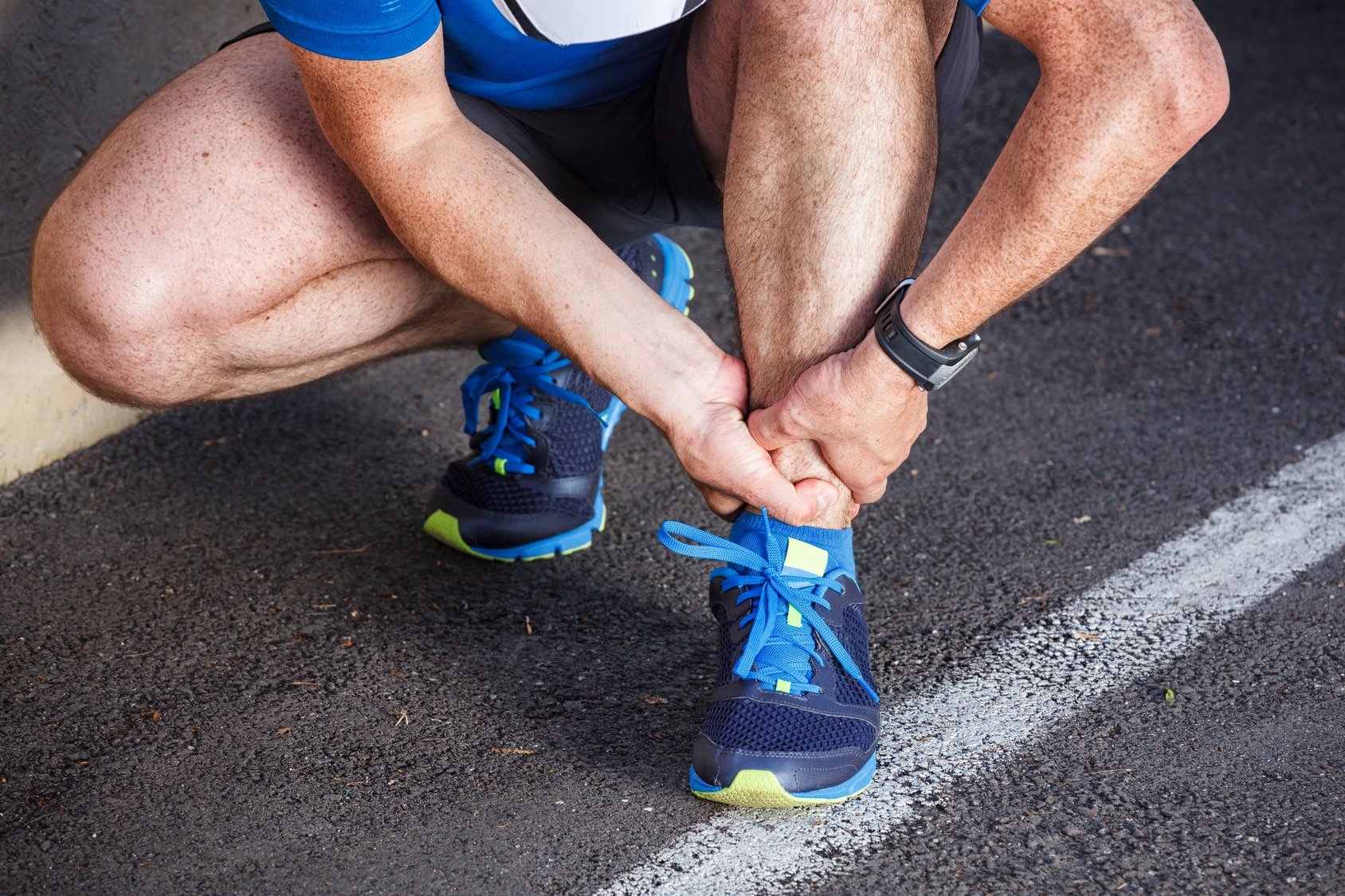Ready to kick heel pain to the curb and keep your running goals on track? You’ve just hit the jackpot!
Looking for practical tips to prevent that pesky heel pain from wreaking havoc on your runs? Well, you’re not alone in this journey.
Let’s face it: heel pain is like that uninvited guest at your running party – annoying and stubborn. It ranges from a mild nuisance to a major roadblock, disrupting the stride of many runners just like you. But here’s the good news: you’re not alone, and there’s plenty you can do about it.
I’m about to spill the beans on some of the most effective ways to bid farewell to that pesky heel pain. Whether you’re lacing up for your first 5K or you’re a trail-blazing 50K enthusiast, the tips I’ve got lined up are your first steps to happy, pain-free heels. Ready for some sole-saving secrets?
Awesome, let’s dive in and show heel pain the door!
The Basics of Heel Pain for Runners
Before we dive into prevention, let me share some insights into the most common causes of heel pain in runners – it’s something I’ve had to tackle in my own running journey, too. Understanding the culprits behind the pain is crucial for effective prevention.
Let’s look at the usual suspects:
- Plantar Fasciitis: This pesky issue occurs when the plantar fascia, that thick band of tissue running along the bottom of your foot, gets inflamed or strained. It can really put a damper on your runs.
- Achilles Tendinitis: Inflamed Achilles tendons can lead to some serious heel pain. I learned the hard way that overtraining, sudden jumps in mileage, or skimping on stretching can contribute to this condition.
- Heel Spurs: These bony growths on the heel bone, or calcaneus, can be quite a nuisance. While the spurs themselves might not always hurt, they can irritate the surrounding tissues and lead to discomfort.
- Stress Fractures: These tiny fractures in the heel bone or nearby bones are particularly common in runners who push too hard without adequate rest.
- Tight Achilles Tendon: A tight Achilles tendon can really strain the heel area. I’ve found that inadequate stretching and flexibility can lead to this kind of pain. It’s like a constant reminder not to skip the cooldown stretches after a run.
How To Prevent Heel Pain From Running
Let me share some tips on protecting your heels from injury while running. I’ve learned that the best way to treat an injury is to avoid it in the first place.
Start Slow
As someone who’s had their fair share of running-related aches, I can tell you that starting slow and smart is crucial.
Most overuse injuries, especially those causing heel pain, creep up on you. They’re the result of doing too much, too soon. That’s why choosing a sensible running program that lets your body gradually adjust to changes in distance and speed is the key to staying injury-free.
Here are some steps that have helped me ensure smooth progress:
- Set Realistic Goals: Be clear and realistic about your running goals. These will guide your training and keep you motivated. When I started setting achievable goals for myself, I noticed a significant decrease in injuries.
- Follow the 10% Rule: I try to limit my weekly mileage increases to no more than 10% to avoid overuse injuries. For instance, if I run 20 miles one week, I’ll only add up to 2 miles the next week.
- Incorporate Rest Days: Rest days are a lifesaver. They’re as crucial as running days, giving your body time to recover and repair. I’ve learned to love and appreciate these days for their role in my training.
- Cross-Train: Activities like swimming, cycling, or strength training work different muscle groups and help reduce strain on your heels. I’ve found that a varied workout routine keeps things interesting and beneficial for my overall fitness.
- Listen to Your Body: This is vital. If you feel any discomfort or heel pain during runs, don’t ignore it. Address it promptly and adjust your training plan if necessary. I’ve found that being in tune with my body’s signals is key to preventing long-term issues.
- Consult a Coach or Expert: If you’re new to running or have specific goals, getting advice from a coach or sports medicine expert can be incredibly helpful. They’ve helped me tailor my training to suit my needs and avoid injuries.
Keep A Healthy Weight
Being overweight can put extra pressure on your legs, and I’ve seen how it can exacerbate issues like plantar fasciitis or heel spurs in fellow runners.
But here’s the good news – losing weight can not only lighten the load on your feet but also bring a myriad of fitness and health benefits. I remember when I started focusing on shedding a few pounds; I felt lighter and more agile on my runs.
If heel pain is hindering your weight-bearing exercises, there are plenty of low-impact alternatives that I’ve found to be effective. Swimming, strength training, cycling, water running, and yoga are great options that keep the stress off your heels while helping you stay in shape.
What’s more, I’ve learned that working with a registered dietitian can be a game-changer. They can help you create a personalized nutrition plan tailored to your specific dietary needs and preferences. It’s not just about losing weight; it’s about finding a healthy balance that supports your running goals.
For more resources on weight loss and maintaining a healthy weight, especially as a runner, there are tons of useful posts and articles out there.
Improve Your Form
One of the lessons I’ve learned as I started taking training more seriously is the importance of good form, especially when it comes to preventing injury.
Protecting yourself against heel pain can often mean identifying and correcting any abnormal movement patterns or muscle imbalances in your lower body.
That’s where a running gait analysis can be a game-changer. I remember the first time I had mine done – it was an eye-opener! Understanding how you run can be key in pinpointing issues that might lead to pain.
Conventional wisdom suggests that a heel-foot strike, where the heel hits the ground first, might cause heel pain. This was true for me. When I tried changing my foot strike to a forefoot or midfoot pattern, I noticed a significant difference in comfort.
However, it’s important to remember that this doesn’t work for everyone. Foot strike patterns are a hotly debated topic in the running community. From what I’ve experienced and heard from fellow runners, much of the advice on this topic is anecdotal – and my advice is no different.
So, proceed with care. Experiment with different foot strikes, but do it gradually and pay close attention to how your body responds. There’s no one-size-fits-all in running, and sometimes, it’s about finding what works best for your unique stride.
Run On the Right Surfaces
The surface you run on can make a huge difference, especially when it comes to preventing heel pain and other overuse injuries. Here’s a tip I’ve found invaluable: whenever possible, avoid running on hard surfaces like asphalt and concrete. These surfaces can be tough on your heels.
Instead, try mixing it up with softer options. Running on a dirt path, grass, or synthetic tracks can offer a welcome change. I’ve noticed that varying running surfaces not only keeps my runs interesting but also helps reduce repetitive strain on my heels.
But what if you’re stuck with hard surfaces? Here are some strategies I’ve used to minimize the impact:
- Proper Footwear: Investing in running shoes with good cushioning and shock absorption is a game-changer. These shoes have been a lifesaver for me, helping to soften the blow each time my foot hits the pavement.
- Shorten Your Stride: On those tougher surfaces, I’ve found that shortening my stride a bit can really help. It reduces the force of impact on my heels and spreads it more evenly across my feet.
- Use Insoles: Cushioned insoles or orthotic inserts can be a great addition, especially if you frequently run on hard surfaces. They add that extra layer of support and shock absorption, making a world of difference in how my feet feel post-run.
- Gradual Transition: If you’re moving from softer to harder running surfaces, take it slow. Your body needs time to adjust to the increased impact. I learned this the hard way – rushing the transition only led to discomfort and a setback in my training.
Warm-up
I hate to break it to you, but I cannot emphasize enough the importance of a proper warm-up. Skipping it or not doing it correctly, can lead to tissue damage in the heel. That’s why I always take a few minutes before each run to get my body ready.
I recommend starting with 5 to 10 minutes of brisk walking or light jogging. Then, move on to dynamic stretches that target key muscle groups like the calves, hamstrings, quadriceps, and groin.
Here’s a look at my favorite warm-up routine – it’s been a game-changer for my runs.
Running in the Right Shoes: A Crucial Choice
In the world of running, shoes are more than just footwear – they’re essential equipment. The wrong shoes can make or break your run. They should fit well and offer plenty of cushion and support. If they don’t, it’s a no-go for me.
When choosing running shoes, it’s crucial to consider the structure of your feet. Look for shoes with good arch support and a slightly elevated heel. Wondering how to find the right pair? I always head to a running specialty store. The staff there can analyze your gait and recommend the best shoes for your running style.
And don’t forget about the fit! Your shoes shouldn’t be too tight, narrow, or small. Give a few pairs a try before settling on the right one.
Also, remember to replace your shoes regularly. Running in worn-out shoes can lead to abnormal stresses on your feet and increase your risk of injury. The general rule I follow is to replace my running shoes every 400 to 500 miles.
Strength And Stretch
As a runner, I’ve found that regularly strengthening and stretching my ankles and feet is a game-changer. It’s not just about support; these exercises can also improve your range of motion, keeping you injury-free for longer. I’ve learned that lacking mobility and strength can lead to muscular imbalances and dysfunctions in the lower legs, eventually causing overuse injuries.
Let me share a few moves that I’ve incorporated into my cross-training routine to promote flexibility and strength in my feet:
Golf Ball Rolls:
This is a simple yet effective exercise. Grab a golf ball and use it like a personal foot masseuse. While sitting comfortably, place the ball under your foot and roll it around, applying gentle pressure under the arch and around the heel. It’s like giving your foot a mini massage – perfect for loosening tight muscles and providing relief from heel pain. I love doing this after a run or even while I’m at my desk
Foot and Ankle Stretches:
Sit down, extend your leg, and rotate your foot in a circular motion – first clockwise, then counterclockwise. Then, flex and point your toes back and forth. These movements stretch out the muscles and tendons in your feet and ankles, enhancing flexibility and reducing tension.
Calf Stretches:
Calf stretches are the secret ingredient for happy heels. Stand facing a wall, extend one leg back, and press the heel towards the floor. Feel the stretch along the back of your lower leg. It’s a gentle yet effective way to ease the tension that often leads to heel pain. Hold the stretch for about 30 seconds, breathing deeply, and then switch legs.
Pay Attention to Your Body
Lastly, the best thing you can do to protect against heel pain from running – and really, all types of injuries – is to listen to your body. Running through the pain is never a good idea.
The whole ‘no pain, no gain’ mantra doesn’t apply in the real world, unless you’re a top athlete with a deep understanding of your limits.
Pain is a signal, a way for your body to tell you that something isn’t right. Ignoring it can lead to more serious issues. So, always pay attention to what your body is telling you. Adjusting or even stopping your activities when you feel pain is not a sign of weakness; it’s smart and responsible running.




